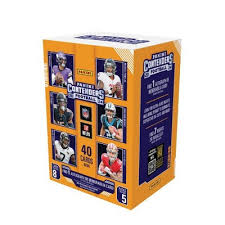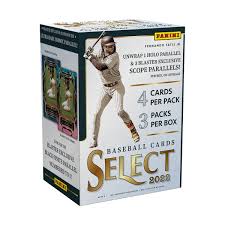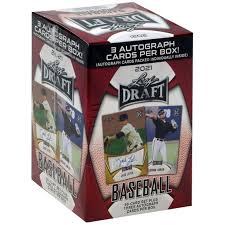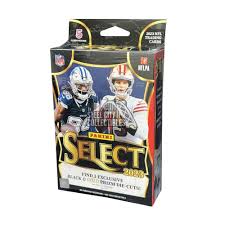

At CardLines, we get hundreds of monthly inquiries from collectors. Nearly half of them are about selling cards on eBay. The need is apparent, and to help, we’re putting together a guide to a dive deep into selling cards on eBay.
This is the fourth article in the guide. Be sure to look back at the previous article on how to determine whether you should sell auction or BIN, how to title your listing, and how to fill out extra listing details. Next we’ll go over shipping and post-sale practices.
Enjoy this article, and be sure to read the rest of our eBay selling guides to ensure you’re getting max profit for all your listings.
As a friendly reminder, in our last article, we ran a test and concluded that Buy It Now listings sold for about 14% more than Auctions. It was a small sample size, but it’s still fair to assume the BIN difference is somewhere between 10-14%.
Here’s a video recap of what we learned
The three factors that help determine whether you should list BIN or auction are the card’s age, how many headlines the player is making, and how quickly you want a return for the sale.
If you haven’t read that article, we encourage you to do so. But now, here’s what you came for: tips for pricing your listing.
Now that you’ve decided whether you want to list as a Buy it Now or an auction, here are two pointers to consider either way.
Not sure what to price your card? Check with the market. Searching for recent sales is the single most important step to take as you begin pricing your card.
It’s a very simple process. First, go to eBay and search for whatever card you’re about to list. Then, on the left side of the screen, scroll down to “Show Only” and click on the filter “Sold Items.” This will pull up only cards that have sold in the last 90 days, including their selling price. Since the card market changes so much over time, use the most recent listings as comps.
If a card sells BIN with the best offer accepted, there’s a slash through the price. The price shown is the asking price, but you can’t actually see the agreed-upon best offer price. Fortunately, 130point.com allows you to search for these listings and find the price, plus it has a window longer than 90 days.
If you’re looking for more info, you can sort by “completed items” instead of “sold items.” This shows you the auctions that did not sell as well, and you can draw more conclusions about pricing and listing techniques from this.
Note: if you’re doing this on mobile, the eBay app has the same functionality. You just tap “filter” on the right side of the screen, “show more,” and the check “sold items.”
It’s also smart to do some “competitor research,” if you will. Before you list a card, search for that card among active listings and determine what the typical asking price is (and if more are auction or BIN). If it’s a pretty low-numbered card and there’s only a handful on eBay, you could list yours as a BIN for a few dollars less than the cheapest if you’re really serious about selling it.
Here are a couple of tips that exclusively apply to auctions.
Why do stores run ads? To get people’s attention and then turn those leads into conversions. In the same way, it’s usually advantageous to price an auction with a low enough starting price that you catch people’s interest and they start watching it. That signals to eBay that the card is worth giving visibility, and it signals to other potential buyers that it might be a nice card.
When I list an auction, I really go for it. I’ll usually start off at just $0.99 cents, even if recent sales are for $1,000+. You don’t have to do this, but I’ve personally always had a lot more views, watchers, bids, and better sales results from those auctions than anything else.
If you’re auctioning your cards, have confidence in the market. Many buyers, myself included, are annoyed by the eBay sellers who say, “Well I’d like to get $200 for this card but I’ll just list it as an auction just in case several people want it.” If you want $200, list it BIN $200.
If that’s your style, I’m not going to say “you need to change.” But at a basic marketing level, remember that lower prices are flashier and will attract more potential buyers.
And, to clarify, it’s not a bad idea to list a $400 card as an auction starting at $200. But if you treat your auction like a BIN price with a higher ceiling, you might actually be shooting yourself in the foot.
Always use the Best Offer feature with BIN. You can automate it (“automatically accept offers of greater than,” or “auto-decline offers of less than…”) to save yourself time, but it’s too valuable not to utilize. Human beings love to haggle. Especially us card collectors. If you take Best Offers, you’ll attract a much bigger crowd.
Piggy-backing off my last point, price your BIN/Or Best Offer so both parties win. If you want $200 for a card, ask $239.99 or Best Offer. Somebody might offer you $180 and you counter $200 to strike the sell. If you do that, both buyer and seller “win.”
And, occasionally, you might ask more than you want and have somebody buy it straight-up – that’s extra profit for you. I’ve seen this happen more than I’d ever guess.
Knowing how to price your auction can help you not only get a better bang for your buck, but also eliminate disappointment of bad sales.
Be sure to come back next time as we look at how to price your cards appropriately. Now go grab your cards, hop on eBay, and start getting the MOST out of each listing. And don’t forget to check out the rest of our eBay Guide articles!
Follow Cardlines.com for all our guides on the best way to sell sports cards on ebay. Here are some of our favorites that we think you will enjoy and profit from selling your cards.
Topps Chrome 2024-25 Basketball: Honest Review and Notes
Did you know this SECRET about PSA slabs? #sportscard #tcg
5 EASY tips to make more money on eBay sports cards.
I opened a sports card mystery box and found something AWESOME inside
The SAD story of Collectable. What went wrong? (The Downfall Fractional Sports Card Investing)
what was Panini doing? 🙄
I compared sports card prices from the big sellers to save YOU money
Is GameStop buying PSA? (the truth!)





2022 Topps Heritage Baseball Blaster Box Configuration: 7 Packs per Box – 9 Cards per Box. Plus 1 extra pack.











Keep up on breaking Sports Card News, our latest articles, product specials and exclusive content with expert analysis of hobby trends.

© Copyright 2025 - All rights reserved Cardlines.com / Media Techs LLC - Sports Card News, Reviews, Releases and BREAKS - #thehobby.
Important: When you click on links to various merchants on this site and make a purchase, this can result in this site earning a commission. Affiliate programs and affiliations include, but are not limited to, the eBay Partner Network.
Panini is launching a WNBA Product at $30,000!?
Cardlines June 27, 2025 5:54 am